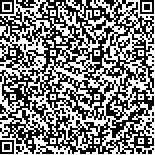| 引用本文: | 赛·巴雅尔图,黄瑾,谢贵娟,冯丽,胡随喜,汤祥明.新疆博斯腾湖浮游细菌丰度对富营养化及咸化的响应.湖泊科学,2011,23(6):934-941. DOI:10.18307/2011.0616 |
| SAI Bayartu,HUANG Jin,XIE Guijuan,FENG Li,HU Suixi,TANG Xiangming.Response of planktonic bacterial abundance to eutrophication and salinization in Lake Bosten, Xinjiang. J. Lake Sci.2011,23(6):934-941. DOI:10.18307/2011.0616 |
|
| |
|
|
| 本文已被:浏览 9679次 下载 5176次 |

码上扫一扫! |
|
|
| 新疆博斯腾湖浮游细菌丰度对富营养化及咸化的响应 |
|
赛·巴雅尔图1, 黄瑾2,3, 谢贵娟2,4, 冯丽1, 胡随喜1, 汤祥明2
|
|
1.新疆巴音郭楞蒙古自治州博斯腾湖科学研究所, 库尔勒 841000;2.中国科学院南京地理与湖泊研究所湖泊与环境国家重点实验室, 南京 210008;3.南京信息工程大学环境科学与工程学院, 南京 210044;4.安徽农业大学生命科学学院, 合肥 230036
|
|
| 摘要: |
| 本文以地处干旱地区我国最大的内陆淡水湖——博斯腾湖为研究对象, 于2010年6月, 在博斯腾湖大小湖区共选取23个采样点, 采用表面荧光显微镜直接计数法(FDC)研究了水体中浮游细菌丰度的空间分布规律及其与环境因子的关系.结果表明:博斯腾湖水体中总氮(TN)浓度在0.26-1.45mg/L之间变动(均值0.91mg/L), 已达到中营养和富营养水平.水体的矿化度(TDS)在219-1696mg/L之间变动(均值1125mg/L), 已达到微咸水湖的标准.水体中浮游细菌的丰度变动在1.41×106-4.57×106 cells/ml之间(均值2.89×106 cells/ml), 其峰值出现在人为活动强烈的金沙滩(5#点)与污染较重的西北部湖区, 最低值出现在盐度最低、污染最轻的河口区(14#点).聚类分析结果显示, 博斯腾湖的23个采样点可以分为淡水区(FR)和微咸水区(BLR)两个类群.微咸水区的TDS、电导率、盐度、TN、高锰酸盐指数、氯化物、硫酸盐的含量及浮游细菌的丰度均显著高于淡水区, 浮游细菌的丰度与CODMn及Cl-呈显著正相关.浮游细菌的空间分布差异是其作为一个敏感指标对水体富营养化及咸化加剧的响应。 |
| 关键词: 博斯腾湖 浮游细菌丰度 富营养化 咸化 |
| DOI:10.18307/2011.0616 |
| 分类号: |
| 基金项目:国家水体污染控制与治理科技重大专项项目(2009ZX07106-004);环保公益性行业科研专项项目(200909048)联合资助 |
|
| Response of planktonic bacterial abundance to eutrophication and salinization in Lake Bosten, Xinjiang |
|
SAI Bayartu1, HUANG Jin2,3, XIE Guijuan2,4, FENG Li1, HU Suixi1, TANG Xiangming2
|
|
1.Institute of Bosten Lake, Environmental Protection Bureau of Bayingolin Mongolia Autonomous Prefecture, Korle 841000, P.R.China;2.State Key Laboratory of Lake Science and Environment, Nanjing Institute of Geography and Limnology, Chinese Academy of Sciences, Nanjing 210008, P.R.China;3.College of Environmental Science and Engineering, Nanjing University of Science Information and Technology, Nanjing 210044, P.R.China;4.School of Life Science, Anhui Agricultural University, Hefei 230036, P.R.China
|
| Abstract: |
| To investigate the response of planktonic bacterial abundance to lake eutrophication and salinization in drought zones, water samples of 23 stations in Lake Bosten were collected in June, 2010.The DAPI-combined epifluorescence direct counting method (DAPI-FDC) was used to identify the spatial distribution pattern of planktonic bacterial abundance and the relationship with the environmental parameters.The results showed that the epilimnetic total nitrogen (TN) concentration in Lake Bosten was ranged 0.26-1.45 mg/L (mean=0.91 mg/L), indicating a mesotrophic and eutrophic level.The concentration of total dissolved solids (TDS) varied from 219 mg/L to 1696 mg/L (mean=1125 mg/L), which indicated that Lake Bosten is a brackish lake now.The abundance of planktonic bacteria was ranged (1.41-4.57)×106 cells/ml (mean=2.89×106 cells/ml), with the higher values appeared in station 5 and other heavily polluted northwest lake regions, and the lowest value appeared in the station 14 located in the estuary.Cluster analysis showed that the 23 sampling stations can be divided into two groups:freshwater region (FR) and brackish lake region (BLR).Compared with freshwater region, the concentrations of TDS, electrical conductivity, salinity, CODMn, chloride and sulfate in brackish lake region were significantly higher.The bacterial abundance was significantly positive correlated with CODMn and Cl-.In summary, the spatial distribution pattern of bacterial abundance was a response to different levels of nutrients and salinity in Lake Bosten.Hence the abundance of bacteria was a sensitive indicator reflecting the eutrophication and salinization. |
| Key words: Lake Bosten planktonic bacterial abundance eutrophication salinization |
|
|
附件
|
|